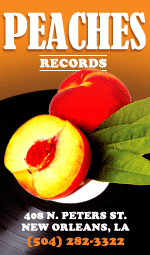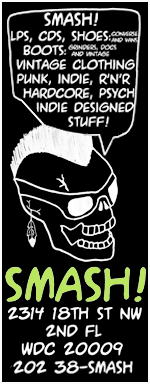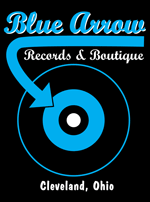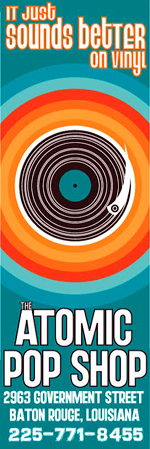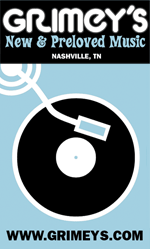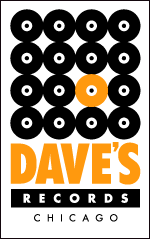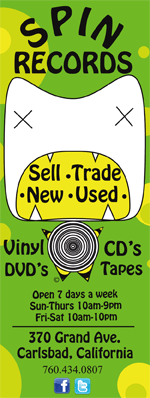
After an exceptional 2024, Elemental Music starts off the new year in strong fashion by adding three more entries to their Motown Sound Collection; Reflections by Diana Ross and the Supremes, Nitty Gritty by Gladys Knight & the Pips, and Pure Smokey by Smokey Robinson. Allowing younger generations of vinyl aficionados the opportunity to build solid shelves of Motown albums without years of perseverance and good luck, all three are available now on limited edition 140 gram vinyl.
Released in 1968, Reflections is notable in the Supremes’ discography for a variety of reasons, two of them related to billing and lineup as Florence Ballard exited the group as the set was being recorded. She’s heard on three of the album’s songs including the title track. As Cindy Birdsong made her entrance, Motown used this circumstance to help solidify a new hierarchy, with Reflections credited to Diana Ross and the Supremes.
Straight away, Reflections isn’t subtle in its psychedelic inflections, though that’s not a knock. The LP ranks high in the group’s oeuvre in terms of quality attained through good judgement that pertains to matters of taste and ultimately, restraint, or perhaps better said, caution. Maybe a mite too cautious, as “I Can’t Make It Alone,” with its harpsichord-ish chimes and what sure sounds like a Theremin (but is almost certainly an approximating synth), serves as a standout (and is maybe the record’s best song). It really should’ve been released as a single.
This brings us to how Reflections marks the Supremes’ culminating collaboration with songwriters Holland-Dozier-Holland. The team’s compositions dominate side one, the stronger of the record’s two halves, as “Forever Came Today” and “In and Out of Love” are also highlights. Side two’s versions of “What the World Needs Now is Love,” “Up, Up and Away,” and “Ode to Billie Joe” go down smooth, but they lack the spark of personal interaction that made Holland-Dozier-Holland’s input such a major component in the Motown narrative.


 Françoise Hardy is a cornerstone of the ’60s Euro-pop phenomenon known as yé-yé. Akin to rock, girl groups, svelte male crooners, and the majority of the era’s teen-oriented sounds in general, yé-yé was widely considered to be of an ephemeral nature, and by extension was basically dominated by the collusion of producers and labels. The singers, amongst them France Gall, Sylvie Vartan, Clothilde, and Chantal Kelly, were the crucial ingredient in a very calculated recipe.
Françoise Hardy is a cornerstone of the ’60s Euro-pop phenomenon known as yé-yé. Akin to rock, girl groups, svelte male crooners, and the majority of the era’s teen-oriented sounds in general, yé-yé was widely considered to be of an ephemeral nature, and by extension was basically dominated by the collusion of producers and labels. The singers, amongst them France Gall, Sylvie Vartan, Clothilde, and Chantal Kelly, were the crucial ingredient in a very calculated recipe.
 Some call the Louisiana-based John Fred a one hit wonder, but that’s arguable. He did place two other songs on the Billboard chart, but neither broke into the Top 40; the first was “Shirley” way back in 1958 (issued by John Fred and the Playboys), released by the Montel label with help from the band of Fats Domino (this song, as covered by Shakin’ Stevens, became a #2 hit in the UK in 1982).
Some call the Louisiana-based John Fred a one hit wonder, but that’s arguable. He did place two other songs on the Billboard chart, but neither broke into the Top 40; the first was “Shirley” way back in 1958 (issued by John Fred and the Playboys), released by the Montel label with help from the band of Fats Domino (this song, as covered by Shakin’ Stevens, became a #2 hit in the UK in 1982).





 20. BASIC – This is BASIC (No Quarter) Doing it sans vocals, Chris Forsythe (guitar), Nick Millevoi (baritone guitar, drum machine), and Mikel Patrick Avery (percussion, electronics) aren’t exactly venturing into well-trod territory with a sound that can perhaps be a bit oversimplified as art-rock/prog-rock meets new wave. Suffice it to say that if you dig the early ’80s records of Robert Fripp, King Crimson from the same era, and pointedly, Fred Maher and Robert Quine’s Basic, then This is BASIC will likely hit you right in the pleasure zone. Math rock lovers take note.
20. BASIC – This is BASIC (No Quarter) Doing it sans vocals, Chris Forsythe (guitar), Nick Millevoi (baritone guitar, drum machine), and Mikel Patrick Avery (percussion, electronics) aren’t exactly venturing into well-trod territory with a sound that can perhaps be a bit oversimplified as art-rock/prog-rock meets new wave. Suffice it to say that if you dig the early ’80s records of Robert Fripp, King Crimson from the same era, and pointedly, Fred Maher and Robert Quine’s Basic, then This is BASIC will likely hit you right in the pleasure zone. Math rock lovers take note. 19. Steph Richards – Power Vibe (Northern Spy) It’s unsurprising given the decidedly retro cover design, but there are a few moments on the fifth full length by trumpeter-flugelhornist-composer-improvisor-bandleader Richards that spring forth from the same era that has so impacted BASIC, if not necessarily the same influences. Because Richard’s work is more jazz rooted and can inspire comparisons to assorted ’70s happenings, including flashes of Creed Taylor’s CTI aesthetic. But Power Vibe is far from any kind of straightforward throwback. Richards playing is the predominant driver of the album’s goodness.
19. Steph Richards – Power Vibe (Northern Spy) It’s unsurprising given the decidedly retro cover design, but there are a few moments on the fifth full length by trumpeter-flugelhornist-composer-improvisor-bandleader Richards that spring forth from the same era that has so impacted BASIC, if not necessarily the same influences. Because Richard’s work is more jazz rooted and can inspire comparisons to assorted ’70s happenings, including flashes of Creed Taylor’s CTI aesthetic. But Power Vibe is far from any kind of straightforward throwback. Richards playing is the predominant driver of the album’s goodness. 18. claire rousay – sentiment & sentiment remixed (Thrill Jockey) Often, when a steadfast experimentalist makes a move toward the pop sphere, a feeling of disappointment can arise and linger. That’s happily not the case with sentiment, as rousay hasn’t drifted into bland conventionality, but is instead still navigating the fringes; her recent stuff has been described as emo ambient (with ties to her earlier experimental work still strong) and there has been comparisons to slowcore, and that’s astute, but also indie-folk, and that’s sweet. Also nifty is the remix album, which is really worth the effort.
18. claire rousay – sentiment & sentiment remixed (Thrill Jockey) Often, when a steadfast experimentalist makes a move toward the pop sphere, a feeling of disappointment can arise and linger. That’s happily not the case with sentiment, as rousay hasn’t drifted into bland conventionality, but is instead still navigating the fringes; her recent stuff has been described as emo ambient (with ties to her earlier experimental work still strong) and there has been comparisons to slowcore, and that’s astute, but also indie-folk, and that’s sweet. Also nifty is the remix album, which is really worth the effort. 17. Telepathic Band – Telepathic Mysteries Vol. 2 (577) The Telepathic Band is Daniel Carter on saxophones, clarinet, and flute, Patrick Holmes on clarinet, Matthew Putman on piano and keyboard, Hilliard Greene on bass, and Federico Ughi on drums. This set is the second half a session that took place at Sear Sound in NYC in 2019. Although clearly launching from the avant-garde (with decades-long relationships as the bonding agent), there’s an occasional sense of tranquility in this material that’s reinforced by the album’s cover photo. But of course, they do build up the intensity very nicely, and it’s great to hear so much top-notch clarinet. A favorite amongst many fine records released by 577 in 2024.
17. Telepathic Band – Telepathic Mysteries Vol. 2 (577) The Telepathic Band is Daniel Carter on saxophones, clarinet, and flute, Patrick Holmes on clarinet, Matthew Putman on piano and keyboard, Hilliard Greene on bass, and Federico Ughi on drums. This set is the second half a session that took place at Sear Sound in NYC in 2019. Although clearly launching from the avant-garde (with decades-long relationships as the bonding agent), there’s an occasional sense of tranquility in this material that’s reinforced by the album’s cover photo. But of course, they do build up the intensity very nicely, and it’s great to hear so much top-notch clarinet. A favorite amongst many fine records released by 577 in 2024.
 10. Rob Mazurek Exploding Star Orchestra – Live at the Adler Planetarium (International Anthem) The Exploding Star Orchestra is the long-running large scale band of cornetist-trumpeter-composer-bandleader-visual artist Mazurek, who was once a fixture on the Chicago scene. Currently living in Marfa, TX, he returned to his old stomping grounds for this delightful set of expansive jazz, the performance accompanied by abstractions derived from Mazurek’s paintings and animations that were digitally projected above the heads of the audience and band in the planetarium’s Grainger Sky Theater. Sun Ra and Fire Music are the roots, but this is very much music of the future.
10. Rob Mazurek Exploding Star Orchestra – Live at the Adler Planetarium (International Anthem) The Exploding Star Orchestra is the long-running large scale band of cornetist-trumpeter-composer-bandleader-visual artist Mazurek, who was once a fixture on the Chicago scene. Currently living in Marfa, TX, he returned to his old stomping grounds for this delightful set of expansive jazz, the performance accompanied by abstractions derived from Mazurek’s paintings and animations that were digitally projected above the heads of the audience and band in the planetarium’s Grainger Sky Theater. Sun Ra and Fire Music are the roots, but this is very much music of the future. 9. Ivo Perelman, Chad Fowler, Reggie Workman, Andrew Cyrille – Embracing the Unknown (Mahakala) The rhythm section here is drummer Cyrille and bassist Reggie Workman (who also adds some percussion to this set), a pair that has already made their mark in this week’s lists as part of the Mal Waldron/Steve Lacy archival set The Mighty Warriors: Live in Antwerp. Cyrille and Workman had already been on the scene for decades by that point, and here we are decades later, with neither having lost a thing. Figure in the lung stamina and deep feeling of Perelman on tenor sax and Fowler on the stritch and saxello and we’re talking another total gem from one of the best jazz labels currently operating.
9. Ivo Perelman, Chad Fowler, Reggie Workman, Andrew Cyrille – Embracing the Unknown (Mahakala) The rhythm section here is drummer Cyrille and bassist Reggie Workman (who also adds some percussion to this set), a pair that has already made their mark in this week’s lists as part of the Mal Waldron/Steve Lacy archival set The Mighty Warriors: Live in Antwerp. Cyrille and Workman had already been on the scene for decades by that point, and here we are decades later, with neither having lost a thing. Figure in the lung stamina and deep feeling of Perelman on tenor sax and Fowler on the stritch and saxello and we’re talking another total gem from one of the best jazz labels currently operating. 8. Thumbscrew – Wingbeats (Cuneiform) The trio Thumbscrew, which is Mary Halvorson on guitar, Tomas Fujiwara on drums and vibraphone, and Michael Formanek on bass, has made TVD’s yearly best list numerous times already. They’ve (obviously) make it again with Wingbeats, their eighth album, and they’ve done it mainly through three weeks of intense compositional construction offered by the City of Asylum Pittsburgh residency program. The interweave of the playing here is amongst the finest in Thumbscrew’s entire run, in part through a creative equality that’s further reflected in the equal number of pieces each member has brought to the record. And then they cap it all off with an exquisite version of “Orange Was the Color of Her Dress, The Blue Silk.”
8. Thumbscrew – Wingbeats (Cuneiform) The trio Thumbscrew, which is Mary Halvorson on guitar, Tomas Fujiwara on drums and vibraphone, and Michael Formanek on bass, has made TVD’s yearly best list numerous times already. They’ve (obviously) make it again with Wingbeats, their eighth album, and they’ve done it mainly through three weeks of intense compositional construction offered by the City of Asylum Pittsburgh residency program. The interweave of the playing here is amongst the finest in Thumbscrew’s entire run, in part through a creative equality that’s further reflected in the equal number of pieces each member has brought to the record. And then they cap it all off with an exquisite version of “Orange Was the Color of Her Dress, The Blue Silk.” 7. Alan Licht – Havens (Black Editions Group / Vin Du Select Qualitite) Having emerged in the 1980s to join Rudolph Grey’s Blue Humans, Love Child, and Run On, Licht has also recorded numerous solo albums since the first one in 1994. He’s an insanely versatile giant on the electric guitar, and Havens is his second for the VDSQ label after Currents in 2015. A double LP offering six tracks that’s bookended with side-long pieces, Havens is built almost entirely out of just Licht’s guitar; opener “Nonchalant,” a Guitar Soli deep dive built on precise repetitions and slight variations, is a highlight, as is the cover of The Stooges’ “1970,” but Havens offers a fascinating ride, rigorous but wholly satisfying, from start to finish.
7. Alan Licht – Havens (Black Editions Group / Vin Du Select Qualitite) Having emerged in the 1980s to join Rudolph Grey’s Blue Humans, Love Child, and Run On, Licht has also recorded numerous solo albums since the first one in 1994. He’s an insanely versatile giant on the electric guitar, and Havens is his second for the VDSQ label after Currents in 2015. A double LP offering six tracks that’s bookended with side-long pieces, Havens is built almost entirely out of just Licht’s guitar; opener “Nonchalant,” a Guitar Soli deep dive built on precise repetitions and slight variations, is a highlight, as is the cover of The Stooges’ “1970,” but Havens offers a fascinating ride, rigorous but wholly satisfying, from start to finish.
 20. Afterimage – Faces to Hide (Independent Project Records) + Torn Boys – 1983 (Independent Project Records) Formed at the dawn of the 1980s, Los Angelinos Afterimage could lead a listener to think they were from merry ol’ England, or not so merry ol’ England to be accurate, as the sound was clearly impacted by the post punk happenings of the time. But there was nothing contrived about Afterimage and their sound was tough and raw, befitting their Cali punk roots. Anybody into cold wave, dark wave, minimal wave (all the waves, basically) should check out this lavishly produced set.
20. Afterimage – Faces to Hide (Independent Project Records) + Torn Boys – 1983 (Independent Project Records) Formed at the dawn of the 1980s, Los Angelinos Afterimage could lead a listener to think they were from merry ol’ England, or not so merry ol’ England to be accurate, as the sound was clearly impacted by the post punk happenings of the time. But there was nothing contrived about Afterimage and their sound was tough and raw, befitting their Cali punk roots. Anybody into cold wave, dark wave, minimal wave (all the waves, basically) should check out this lavishly produced set. Per the title of their retrospective collection, Stockton, CA’s Torn Boys didn’t stick around long, but while extant they did lay down enough high quality material that IPR made the wise decision to drop it onto LP. The sound is art-punk with vocal harmonies and drum machine rhythms, an attack that hovers in the California hills somewhere between Keats Rides a Harley and The Enigma Variations.
Per the title of their retrospective collection, Stockton, CA’s Torn Boys didn’t stick around long, but while extant they did lay down enough high quality material that IPR made the wise decision to drop it onto LP. The sound is art-punk with vocal harmonies and drum machine rhythms, an attack that hovers in the California hills somewhere between Keats Rides a Harley and The Enigma Variations. 19. Cold Sun – Dark Shadows (Guerssen) + The Artwoods – Art Gallery & I Take It All (Singles Collection) (Guerssen) Based in Catalonia, Spain, the Guerssen label is indefatigable in maintaining a frequent release schedule that ranges from psychedelia to folk-rock to proto metal to prog with visitations to the private press fringes. Every year is a pretty good one for Guerssen and its many subsidiaries, but in 2024 they hit a higher note than usual, in part due to a fine reissue of the sole release by the Austin, TX dark psych outfit Cold Sun. Lots of obscure reissues get puffed up with hype only to deflate like a goddamned souffle once the needle is dropped. Not Dark Shadows.
19. Cold Sun – Dark Shadows (Guerssen) + The Artwoods – Art Gallery & I Take It All (Singles Collection) (Guerssen) Based in Catalonia, Spain, the Guerssen label is indefatigable in maintaining a frequent release schedule that ranges from psychedelia to folk-rock to proto metal to prog with visitations to the private press fringes. Every year is a pretty good one for Guerssen and its many subsidiaries, but in 2024 they hit a higher note than usual, in part due to a fine reissue of the sole release by the Austin, TX dark psych outfit Cold Sun. Lots of obscure reissues get puffed up with hype only to deflate like a goddamned souffle once the needle is dropped. Not Dark Shadows. Those perpetually hungry for UK Beat-Mod stuff have likely already devoured Art Gallery and I Take It All. The frontman was Ronnie Wood’s younger bro Art Wood, so they did the sensible thing and named themselves the Artwoods. But Jon Lord and Keef Hartley were also members, so the band was brimming with talent if lacking in original material. But it’s no matter really, as both of these albums are about that UK Beat-Mod sound.
Those perpetually hungry for UK Beat-Mod stuff have likely already devoured Art Gallery and I Take It All. The frontman was Ronnie Wood’s younger bro Art Wood, so they did the sensible thing and named themselves the Artwoods. But Jon Lord and Keef Hartley were also members, so the band was brimming with talent if lacking in original material. But it’s no matter really, as both of these albums are about that UK Beat-Mod sound. 18. John Wright Trio – South Side Soul (Craft Recordings / Original Jazz Classics) + Prince Lasha & Sonny Simmons – The Cry! (Craft Recordings / Acoustic Sounds) In terms of pure quality, these aren’t the best records Craft Recordings reissued in their Original Jazz Classics or Contemporary Records lines, but they are exactly the type of records the label should continue to make available. South Side Soul was Wright’s debut album, a trio date from the noteworthy if underrated pianist that’s infused with Windy City flavor; if Prestige hadn’t put it out, it would’ve worked nicely as one of the Delmark label’s jazz releases.
18. John Wright Trio – South Side Soul (Craft Recordings / Original Jazz Classics) + Prince Lasha & Sonny Simmons – The Cry! (Craft Recordings / Acoustic Sounds) In terms of pure quality, these aren’t the best records Craft Recordings reissued in their Original Jazz Classics or Contemporary Records lines, but they are exactly the type of records the label should continue to make available. South Side Soul was Wright’s debut album, a trio date from the noteworthy if underrated pianist that’s infused with Windy City flavor; if Prestige hadn’t put it out, it would’ve worked nicely as one of the Delmark label’s jazz releases. The Cry! is important for a variety of reasons, foremost for its documentation of two figures associated with the jazz avant-garde who are too often overlooked, and at an early juncture, when they were both collaborating with Eric Dolphy. By extension, this album reinforces how the New Thing was an impulse that spread out beyond the marquee names associated with the movement. Mostly though, The Cry! just sounds fantastic.
The Cry! is important for a variety of reasons, foremost for its documentation of two figures associated with the jazz avant-garde who are too often overlooked, and at an early juncture, when they were both collaborating with Eric Dolphy. By extension, this album reinforces how the New Thing was an impulse that spread out beyond the marquee names associated with the movement. Mostly though, The Cry! just sounds fantastic.
 10. Billy Childish – From Fossilised Cretaceous Seams: A Short History of His Song and Dance Groups (Damaged Goods) + Thee Headcoats – I Am the Object of Your Desire (Damaged Goods) A double dose of goodness from one of history’s greatest men. From Fossilised Cretaceous Seams is exactly what its full title promises, but nicely non-chronological, and at 33 songs just the right length to leave ears new to Billy Childish thirsting for more. That makes Damaged Goods’ latest Thee Headcoats reissue a logical next step.
10. Billy Childish – From Fossilised Cretaceous Seams: A Short History of His Song and Dance Groups (Damaged Goods) + Thee Headcoats – I Am the Object of Your Desire (Damaged Goods) A double dose of goodness from one of history’s greatest men. From Fossilised Cretaceous Seams is exactly what its full title promises, but nicely non-chronological, and at 33 songs just the right length to leave ears new to Billy Childish thirsting for more. That makes Damaged Goods’ latest Thee Headcoats reissue a logical next step. From Fossilised Cretaceous Seams drives home how the assorted groups with Billy Childish as the common denominator are far from interchangeable. But on occasion, someone still floats the opinion that if you’ve heard one record by Thee Headcoats (or Thee Mighty Caesars or The Buff Medways), then you’ve essentially heard them all. Balderdash. I Am the Object of Your Desire is noticeably raunch-bluesier than the more Beat frenzied Heavens to Murgatroyd, for example. So, if you picked up Damaged Goods’ Murgatroyd reissue in 2023, you’ll be sitting pretty with this one.
From Fossilised Cretaceous Seams drives home how the assorted groups with Billy Childish as the common denominator are far from interchangeable. But on occasion, someone still floats the opinion that if you’ve heard one record by Thee Headcoats (or Thee Mighty Caesars or The Buff Medways), then you’ve essentially heard them all. Balderdash. I Am the Object of Your Desire is noticeably raunch-bluesier than the more Beat frenzied Heavens to Murgatroyd, for example. So, if you picked up Damaged Goods’ Murgatroyd reissue in 2023, you’ll be sitting pretty with this one. 9. Duck Baker – Breakdown Lane: Free Solos & Duos 1976-1998 (ESP-Disk) + Sandy Bull – Still Valentine’s Day 1969 (No Quarter) Baker is no stranger to this site’s year’s end lists, but Breakdown Lane differs from his prior appearances in that Baker is largely focused, per the title, on the freeform side of things. Excepting two duos with Eugene Chadbourne (including an excellent “Take the ‘A’ Train” that kicks off a late disc swing into song form with a solo “Straight No Chaser” as a finale), this is all solo, with Baker’s progressions quite comforting.
9. Duck Baker – Breakdown Lane: Free Solos & Duos 1976-1998 (ESP-Disk) + Sandy Bull – Still Valentine’s Day 1969 (No Quarter) Baker is no stranger to this site’s year’s end lists, but Breakdown Lane differs from his prior appearances in that Baker is largely focused, per the title, on the freeform side of things. Excepting two duos with Eugene Chadbourne (including an excellent “Take the ‘A’ Train” that kicks off a late disc swing into song form with a solo “Straight No Chaser” as a finale), this is all solo, with Baker’s progressions quite comforting. Still Valentine’s Day 1969 was first released by the Water label in 2006, but it was CD only, so this very attractive and nicely mastered vinyl edition is quite welcome, particularly because the performances (from The Matrix in San Francisco on February 14th and April 5th, 1969) capture Bull in strong form on electric and acoustic guitar and oud. Fans of Bull’s 60’s albums for Vanguard who’ve never caught up with this set should find Still Valentine’s Day 1969 very much to their liking.
Still Valentine’s Day 1969 was first released by the Water label in 2006, but it was CD only, so this very attractive and nicely mastered vinyl edition is quite welcome, particularly because the performances (from The Matrix in San Francisco on February 14th and April 5th, 1969) capture Bull in strong form on electric and acoustic guitar and oud. Fans of Bull’s 60’s albums for Vanguard who’ve never caught up with this set should find Still Valentine’s Day 1969 very much to their liking. 8. Joe McPhee – Black Magic Man & The Willisau Concert & Tenor (Superior Viaduct) + Charlie Nothing – The Psychedelic Saxophone of Charlie Nothing/In Eternity with Brother Frederic (Real Gone) Joe McPhee is a giant of free jazz saxophone whose profile was significantly raised when Swiss businessman Werner X. Uehlinger initiated a new label, Hat Hut, with a string of McPhee reissues and archival releases. First was Black Magic Man (Hat Hut A), a live record directly connected to McPhee’s outstanding Nation Time, second was The Willisau Concert (Hat Hut B), a 1975 live recording with synthesizer player John Snyder and drummer Makaya Ntshoko, and then Tenor (Hat Hut C), an impromptu solo performance given after dinner in Switzerland in 1976. Superior Viaduct deserves serious kudos for bringing these records back into circulation.
8. Joe McPhee – Black Magic Man & The Willisau Concert & Tenor (Superior Viaduct) + Charlie Nothing – The Psychedelic Saxophone of Charlie Nothing/In Eternity with Brother Frederic (Real Gone) Joe McPhee is a giant of free jazz saxophone whose profile was significantly raised when Swiss businessman Werner X. Uehlinger initiated a new label, Hat Hut, with a string of McPhee reissues and archival releases. First was Black Magic Man (Hat Hut A), a live record directly connected to McPhee’s outstanding Nation Time, second was The Willisau Concert (Hat Hut B), a 1975 live recording with synthesizer player John Snyder and drummer Makaya Ntshoko, and then Tenor (Hat Hut C), an impromptu solo performance given after dinner in Switzerland in 1976. Superior Viaduct deserves serious kudos for bringing these records back into circulation. Charles Martin Simon aka Charlie Nothing was an artist, writer, instrument maker, and musician whose first album, originally released by John Fahey’s Takoma label and reissued here, is his most well-known. It features the man blowing hard and alone on saxophone and flute save for the accompaniment of a gong, a conga drum, and a banjo ukulele. Each piece takes up an entire side, and it’s safe to say the album is still pretty contentious, at least in jazz terms. But skronky? Oh yeah. And psychedelic? Most definitely. Thing is, Charlie could definitely play (just not at the level of Joe McPhee), so this is more than just undisciplined huffing and honking.
Charles Martin Simon aka Charlie Nothing was an artist, writer, instrument maker, and musician whose first album, originally released by John Fahey’s Takoma label and reissued here, is his most well-known. It features the man blowing hard and alone on saxophone and flute save for the accompaniment of a gong, a conga drum, and a banjo ukulele. Each piece takes up an entire side, and it’s safe to say the album is still pretty contentious, at least in jazz terms. But skronky? Oh yeah. And psychedelic? Most definitely. Thing is, Charlie could definitely play (just not at the level of Joe McPhee), so this is more than just undisciplined huffing and honking.
 10. Creation Rebel – High Above Harlesden 1978–2023 (On-U Sound) 2024 was another solid year for the On-U Sound reissue program, starting out strong in March with the release of this 6CD box set collecting the six albums this estimable and persevering UK-based dub unit recorded in the titular quarter century. Those half dozen LPs were given concurrent standalone LP pressings, so vinyl hardliners take note. Maybe the biggest compliment that can be bestowed on this set (and by extension, the group and Adrian Sherwood) is that Creation Rebel’s most recent album Hostile Environment isn’t the weakest of the six.
10. Creation Rebel – High Above Harlesden 1978–2023 (On-U Sound) 2024 was another solid year for the On-U Sound reissue program, starting out strong in March with the release of this 6CD box set collecting the six albums this estimable and persevering UK-based dub unit recorded in the titular quarter century. Those half dozen LPs were given concurrent standalone LP pressings, so vinyl hardliners take note. Maybe the biggest compliment that can be bestowed on this set (and by extension, the group and Adrian Sherwood) is that Creation Rebel’s most recent album Hostile Environment isn’t the weakest of the six. 9. Tsunami – Loud Is As (Numero Group) Having decided to devote a portion of their energies to assorted bands from the late-1980s-’90s rock underground, Numero Group’s resulting reissue program has been commendable, and nowhere better than this 5LP set. Tsunami’s frontwomen Jenny Toomey and Kristin Thomson co-founded Simple Machines, which quickly became one point on a thriving DMV label triangle with Dischord and Teen-Beat. The band’s guitar-based sound was pleasingly tough and raw and yet a needed antidote to rampant u-ground rock scene testosterone. Best of all, Tsunami’s music, which has become difficult to find in physical form, still sounds fucking great.
9. Tsunami – Loud Is As (Numero Group) Having decided to devote a portion of their energies to assorted bands from the late-1980s-’90s rock underground, Numero Group’s resulting reissue program has been commendable, and nowhere better than this 5LP set. Tsunami’s frontwomen Jenny Toomey and Kristin Thomson co-founded Simple Machines, which quickly became one point on a thriving DMV label triangle with Dischord and Teen-Beat. The band’s guitar-based sound was pleasingly tough and raw and yet a needed antidote to rampant u-ground rock scene testosterone. Best of all, Tsunami’s music, which has become difficult to find in physical form, still sounds fucking great. 8. Soft Machine – Høvikodden 1971 (Cuneiform) Last year it was The Dutch Lesson, which took the seventh spot in this site’s Best Box Sets of 2023. Slipping one spot isn’t indicative of anything; Høvikodden 1971 is likely stronger than The Dutch Lesson, but I’ll confess that I haven’t thought of them comparatively that much, in large part because Mike Ratledge is the only commonality between the two bands. This set offers the “classic” lineup captured in two performances held in an art museum with projections rather than in a rock club. They sound inspired, and indeed progressively (see what I did there?) more inspired on disc two, as they got comfortable and really started dishing out the expansive grooves.
8. Soft Machine – Høvikodden 1971 (Cuneiform) Last year it was The Dutch Lesson, which took the seventh spot in this site’s Best Box Sets of 2023. Slipping one spot isn’t indicative of anything; Høvikodden 1971 is likely stronger than The Dutch Lesson, but I’ll confess that I haven’t thought of them comparatively that much, in large part because Mike Ratledge is the only commonality between the two bands. This set offers the “classic” lineup captured in two performances held in an art museum with projections rather than in a rock club. They sound inspired, and indeed progressively (see what I did there?) more inspired on disc two, as they got comfortable and really started dishing out the expansive grooves. 7. The Saints – (I’m) Stranded (In the Red / Universal Music Australia) With this 4LP set, the case can legitimately be made for The Saints as the greatest Aussie punk band of the original wave. There are other contenders, but we’re not going to list them, as this remarkable collection is wholly deserving of the entire spotlight. It holds the band’s classic debut remastered for vinyl, the previously unreleased alternate mix from 1976, the “This Perfect Day” 12-inch and the “1-2-3-4” double 7-inch, and two live sets, one short (five songs) and one album length. The title track has been anthologized countless times and will likely remain the band’s signature tune, but this set is positively stuffed with goodness.
7. The Saints – (I’m) Stranded (In the Red / Universal Music Australia) With this 4LP set, the case can legitimately be made for The Saints as the greatest Aussie punk band of the original wave. There are other contenders, but we’re not going to list them, as this remarkable collection is wholly deserving of the entire spotlight. It holds the band’s classic debut remastered for vinyl, the previously unreleased alternate mix from 1976, the “This Perfect Day” 12-inch and the “1-2-3-4” double 7-inch, and two live sets, one short (five songs) and one album length. The title track has been anthologized countless times and will likely remain the band’s signature tune, but this set is positively stuffed with goodness.
 Professor Longhair’s 1970s renaissance is one of the sweeter late acts in the whole of 20th century American music; throughout the decade Henry Roeland Byrd was knocking out crowds on festival stages across the USA and Europe, but before the Alligator label’s 1980 release of Crawfish Fiesta the pianist was still primarily known on home stereos for his ‘50s work as collected by Atlantic on their classic ’72 LP New Orleans Piano.
Professor Longhair’s 1970s renaissance is one of the sweeter late acts in the whole of 20th century American music; throughout the decade Henry Roeland Byrd was knocking out crowds on festival stages across the USA and Europe, but before the Alligator label’s 1980 release of Crawfish Fiesta the pianist was still primarily known on home stereos for his ‘50s work as collected by Atlantic on their classic ’72 LP New Orleans Piano.
 A pop icon, but also a pop idol in his youth, Frank Sinatra had the kids screaming. And one barometer of 20th century pop icon/idol status is that those on the list didn’t just cut records, they made movies. Bing Crosby, Frank, Elvis Presley, The Beatles (notably, the only band in the bunch), and Michael Jackson: they all interacted to varying extents with the film industry, as the careers of all but Jackson hit their high points in the pre-music video era (and Jackson was arguably the defining artist across the short heyday of music video).
A pop icon, but also a pop idol in his youth, Frank Sinatra had the kids screaming. And one barometer of 20th century pop icon/idol status is that those on the list didn’t just cut records, they made movies. Bing Crosby, Frank, Elvis Presley, The Beatles (notably, the only band in the bunch), and Michael Jackson: they all interacted to varying extents with the film industry, as the careers of all but Jackson hit their high points in the pre-music video era (and Jackson was arguably the defining artist across the short heyday of music video).



















